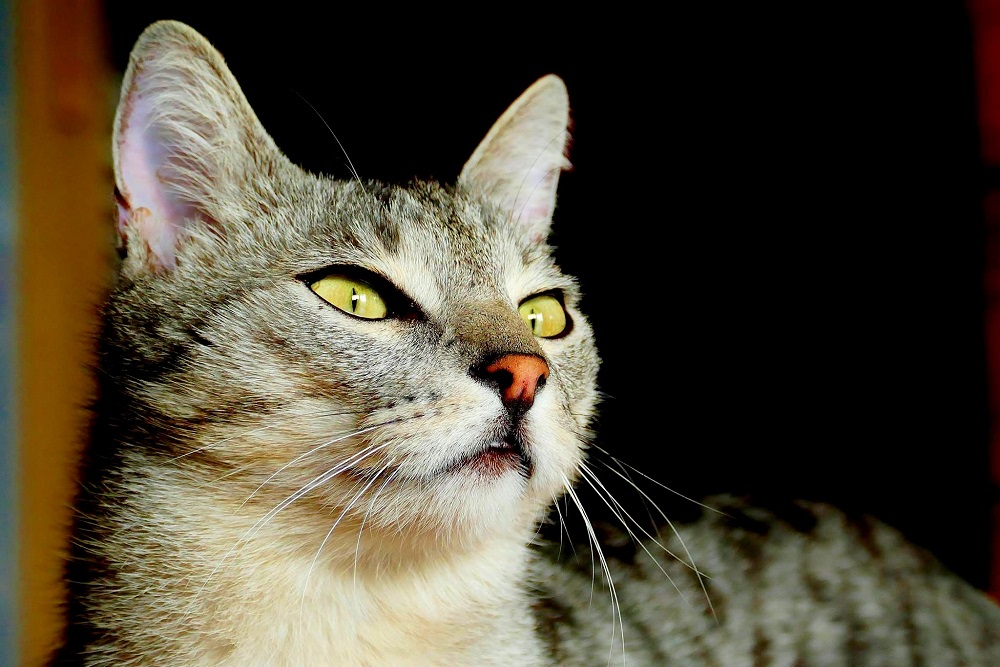Have you ever snuggled up with your feline friend and heard them purring contentedly away? It’s a sound that warms the heart and brings peace to any room. But have you ever wondered what it means when cats purr, or how to respond appropriately? Look no further, because in this blog post we’ll dive into the meaning of a cat’s purr and explore the science behind it. So sit back, relax, and let’s unravel the mystery of our furry friends’ soothing vibrations!
What is purring?
What is purring? If you’re a cat owner, you’ve likely heard this sound many times before. Purring is the low rumbling noise that cats make when they are feeling content and relaxed. It’s a sound that can provide comfort to both the cat and their human companions.
Purring is produced by vibrations in a cat’s vocal cords. These vibrations occur at a frequency of 25-150 Hertz, which is within the range that humans can hear. Not all cats purr, but for those who do, it’s often associated with positive emotions such as happiness or relaxation.
Interestingly, cats don’t just purr when they’re happy – they also do it when they’re anxious or in pain. This suggests that purring may have some sort of healing effect on their bodies and minds.
Understanding what purring is and why cats do it can help us better connect with our feline friends and provide them with the care they need to live happy lives.
The meaning of a cat’s purr
The meaning of a cat’s purr is something that has puzzled humans for centuries. While most people associate purring with contentment, there are actually many different reasons why cats might purr.
One common reason for a cat to start purring is when they’re feeling happy and relaxed. This can happen when they’re being petted or cuddled, or simply when they’re lying in the sun and enjoying life.
However, cats also sometimes purr in situations where you might not expect it. For example, some cats will start purring when they’re anxious or scared – perhaps as a way of calming themselves down.
Another possible explanation for why cats purr is that it’s a form of communication. Cats are known to be highly attuned to their owners’ moods and emotions, so it’s possible that they use purring as a way of conveying information about how they feel.
The meaning behind a cat’s purr is likely to vary depending on the individual animal and the situation at hand. However, one thing we do know for sure is that hearing your beloved feline friend happily chirping away can bring joy into any home!
How to respond to a purring cat
When a cat starts purring, it’s natural to want to respond in some way. But what should you do? Here are a few suggestions on how to respond:
Firstly, try not to startle the cat or interrupt their purring. This could cause them stress and make them stop purring altogether.
Instead, stay calm and relaxed. You can offer your cat gentle strokes or scratches under their chin or behind their ears if they seem open to it.
If your cat is comfortable with being held, you can also pick them up for a cuddle while they’re still purring.
Another way to respond is by talking softly and calmly to your kitty. They may not understand the words but the tone of voice will be soothing for them and help deepen the bond between you both.
Simply enjoy the moment! Purring is a sign that your feline friend feels safe and happy around you – so take pleasure in knowing that they trust you enough to let down their guard like this.
The benefits of purring
Cats purr for various reasons, and one of the benefits of this sound is that it can have a calming effect on both the cat and its owner. When a cat purrs, it releases endorphins which promote relaxation and reduce stress levels.
The act of petting or cuddling with a purring cat can also release these same feel-good hormones in humans, making them more relaxed and happy as well. This is why many people find comfort in spending time with their feline companions.
Purring has even been shown to have physical health benefits as well. The frequency at which cats purr (between 25-150 Hz) has been found to be therapeutic for bone growth and repair, pain relief, and inflammation reduction.
Additionally, some studies suggest that owning a cat can lower blood pressure and decrease the risk of heart disease. While there are likely several factors contributing to this phenomenon, having a furry friend who provides soothing sounds through their purring may play a role.
The benefits of purring go beyond just being an indication of contentment from your feline companion – they may actually contribute to overall physical and mental wellbeing for both you and your pet!
The science behind purring
Have you ever wondered about the science behind a cat’s purring? It turns out that there is more to this soothing sound than meets the eye.
Firstly, it’s important to note that not all cats can purr. Only domestic cats, some wildcats like cougars and bobcats, and certain other feline species have the ability to produce this unique vocalization.
The mechanism behind purring involves the contraction of muscles in a cat’s larynx and diaphragm at a frequency of around 25-150 Hertz. This causes vibrations in their airways which results in the familiar rumbling sound we associate with contented kitties.
Interestingly, research has shown that cats may also use their purrs for healing purposes. The vibrations produced by these sounds could help promote bone density and tissue regeneration while reducing pain and inflammation.
Additionally, studies suggest that our feline friends may even use different types of purrs to communicate various emotions such as hunger or fear.
Understanding the science behind a cat’s purring can give us greater insight into our furry companions’ behaviors and well-being.
Conclusion
Purring is not just a simple sound that cats make. It carries a lot of meaning and serves various purposes for them. By understanding the different contexts in which they purr, we can respond better to our feline friends and provide them with the care they need.
Moreover, knowing the science behind purring helps us appreciate its benefits more fully. From healing properties to stress reduction, it’s no wonder why cats have been dubbed as “purring machines.”
So next time you hear your cat purr, take a moment to listen closely and understand what it might be trying to communicate with you. And who knows? Maybe you’ll find yourself feeling calmer and more relaxed too!








